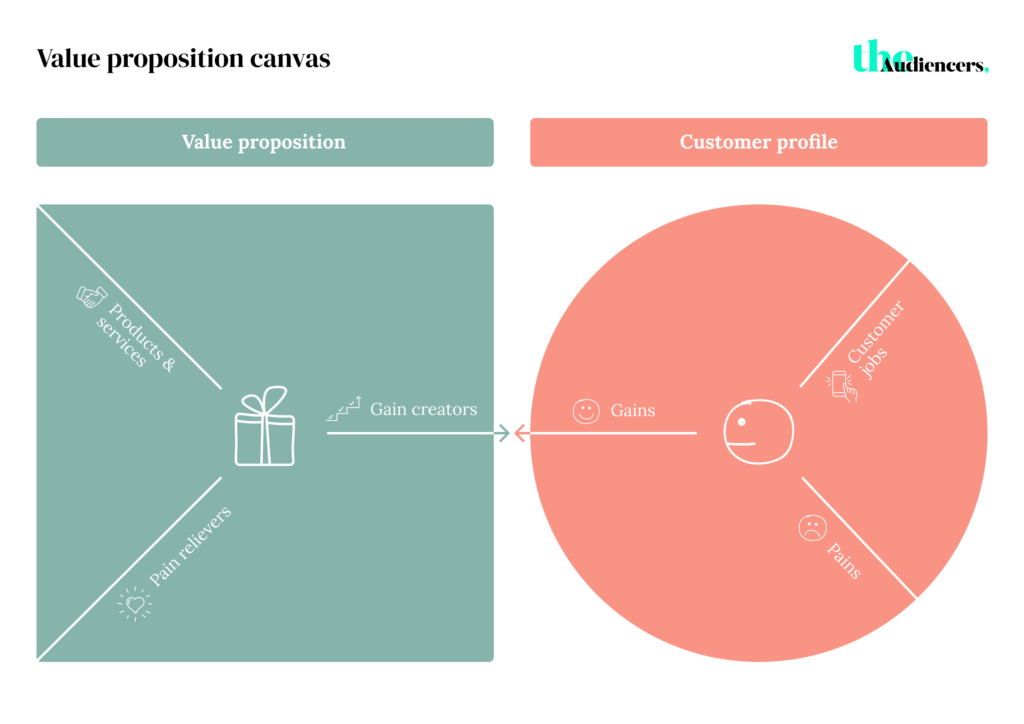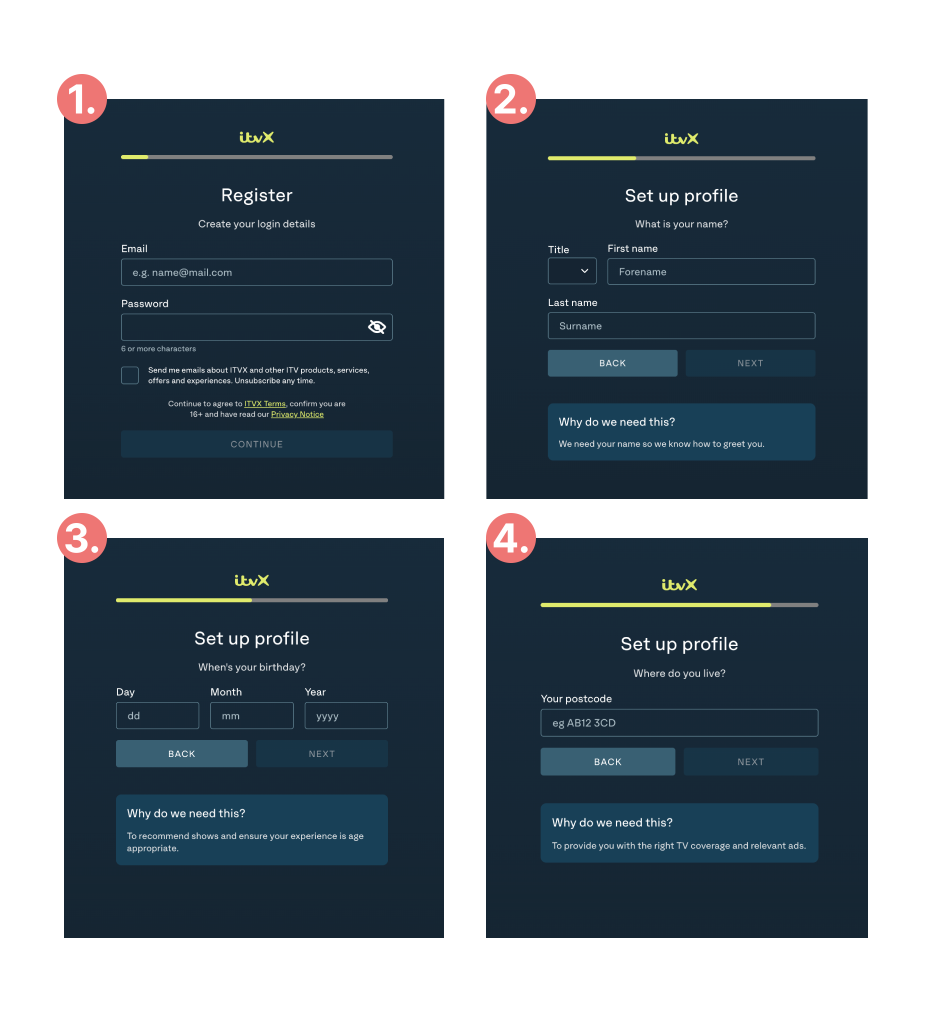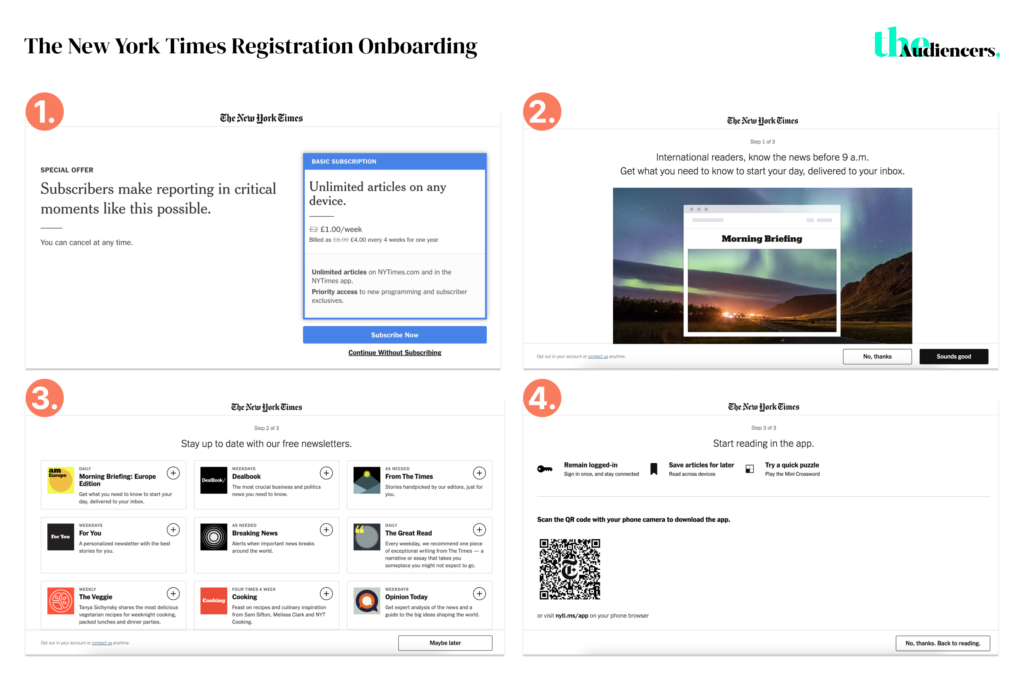

With the various challenges facing digital publishers today, the need for diversified revenue models has never been more important in securing a sustainable future. And with this, registration strategies are finally getting their time in the limelight…
Some of the benefits of implementing a registration strategy include:
- First-party data collection & custom reader ID to track users across devices (meaning valuable behavioural, interest & demographic data)
- Increased ad revenue through targeting
- Higher lifetime value (registered users have increased retention rates if they later subscribe)
- Tailored & targeted eCommerce opportunities
- Solve leaky paywall issues
- Provide additional value and an improved user experience to increase engagement (email alone is hugely valuable – we’ve seen how newsletters can increase reader revenue)
- Not to mention that registered members are highly more likely to convert into subscribers in the future. The New York Times’ registration model has increased conversion rates to subscription by more than 40%, registered users on L’Équipe are 13 times more likely to subscribe than anonymous readers, whilst at The Independent, these de-anonymized users are 45 times more likely to subscribe.
So, if registration is the “next big thing”, how can you launch a registration wall strategy successfully?
1. Build registration like any premium product
Registration, just like subscription, involves a value exchange. You provide additional value to a user and, in exchange, they provide you with key data points and a custom reader ID. Given this, registration should be thought of as a product in and of itself, one with clear benefits and a value proposition that explains why users should convert.
The value proposition canvas below can be used to first define the customer profile, before matching their pains, gains and jobs-to-be-done with your product.

To ensure high uptake on your registration value exchange, it’s also essential to be transparent with how you’ll use your reader’s data. The UK streaming service itvX is a brilliant example here, integrating a “Why do we need this?” information box at each step of the user journey to creating an account.
Benchmark example: itvX

Many consumers actually aren’t aware of the reasons why publishers are suddenly eager to collect their emails and register them. And with increasing caution being taken to data privacy online, it’s essential to be transparent, build trust and reassure users that you won’t be sharing their information around or using it for anything other than to support your business.
2. Integrate registration into your subscription conversion journey
Registration provides a valuable stepping stone between an unengaged, volatile visitor and a paying subscriber, increasing a user’s propensity to subscribe by up to 45 times.
Not only will you be able to provide additional value and increase engagement through habit-forming content such as newsletters, but you can learn about your user to personalise the subscription journey, adapting messaging, pricing and value to match the user’s profile.
Found a reader who has a particular interest in politics? Make sure to forefront that subscriber-only political newsletter that they’d enjoy, using this content to hook them in to subscribing.
Benchmark example: The Independent
Immediate value for the reader = continue reading without paying
Other benefits: “limited access to Premium articles, exclusive newsletters, commenting, and virtual events with our leading journalists” for free whilst also supporting “truly independent journalism”.
Some value is reserved for de-anonymized users (such as commenting and exclusive newsletters) whilst others are for subscribers only (including bookmarking content). The goal for The Independent is therefore to increase engagement through registration, community and other strategies, gradually moving a user towards paying for subscription.
3. Onboard registered users like you would subscribers
Make the most of the account creation process to increase engagement as those users with high frequency, recency and volume of visits are the most likely to subscribe in the future. Just like onboarding a new subscriber, you can consider:
- Newsletter subscription
- Encouraging a user to download your app
- Promoting subscription (e.g. a free trial or reduced offer)
- Asking questions for personalising the user experience (e.g. what content are you interested in?)
- Introducing your membership (i.e. what do they now have access to? How can they make the most of this?)
Benchmark example: The New York Times

Step 1: special subscription offer for this newly registered user. Goal = increase user-to-subscriber conversion rates
Step 2: subscribe to their daily newsletter (note the “international readers” personalization based on my location outside of the US). Goal = form a morning habit of consuming the NYT content
Step 3: sign up to their other free newsletters. Goal = increase engagement and bring nicher content directly to a reader’s inbox
Step 4: download the app. Goal = be in the reader’s pocket at all times, with push notifications being a particularly valuable engagement technique
4. Make use of registration to improve the user experience
With registration comes data collection from the form fields (at the point of creating an account) as well as progressive profiling of a user as they interact with your content. This information is hugely valuable and should be put to use in increasing engagement in order to eventually increase average revenue per user (ARPU). Some ideas include:
- A dedicated account space
- Personalised news feed
- Dynamic subscription messaging and cost based on their interests and propensity to subscribe
- Fewer form fields in the paywall to reduce friction (you already have their name and email, for example)
But, of course, if you use registration as a step towards subscription, put this data and engagement strategies to work in encouraging conversion. After all, it’s a balancing game between frustration and engagement.
Benchmark example: The Sydney Morning Herald
- Metered model: 5 free articles a month after registration
- Personal account space
- Save items for later & viewing history
- Some features reserved for subscribers only












